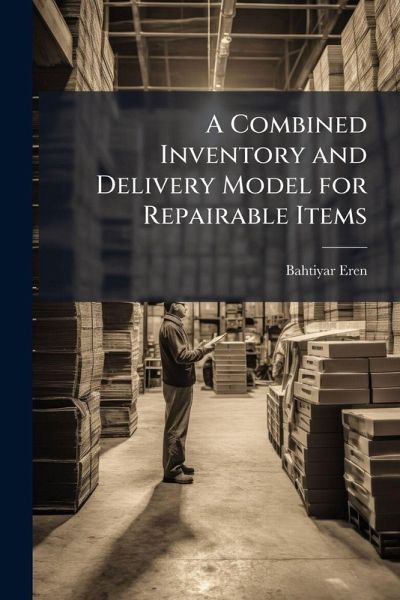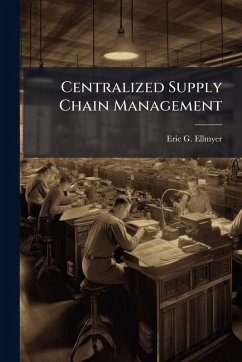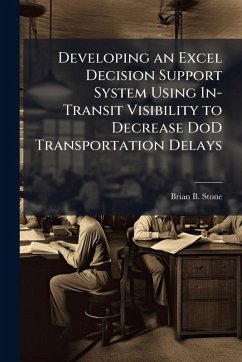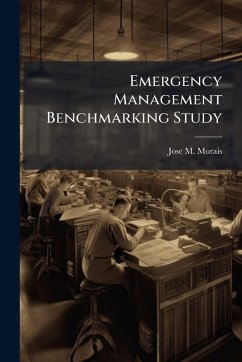
A Combined Inventory and Delivery Model for Repairable Items
Versandkostenfrei!
Versandfertig in über 4 Wochen
17,99 €
inkl. MwSt.
Weitere Ausgaben:

PAYBACK Punkte
9 °P sammeln!
Traditionally, logistics analysts have treated the delivery problem separate from the inventory and repair problems. In other words, each of these three problems--delivery, inventory, and repair--are treated individually. We combine the vehicle routing problems and inventory allocation problems in a single formulation. Furthermore, lateral re-supply is considered, in that supplies are not only available from the main depot, but also from other bases. After we get the lateral re-supply information, we set a delivery allocation plan out of the main depot. Such allocations are then delivered via ...
Traditionally, logistics analysts have treated the delivery problem separate from the inventory and repair problems. In other words, each of these three problems--delivery, inventory, and repair--are treated individually. We combine the vehicle routing problems and inventory allocation problems in a single formulation. Furthermore, lateral re-supply is considered, in that supplies are not only available from the main depot, but also from other bases. After we get the lateral re-supply information, we set a delivery allocation plan out of the main depot. Such allocations are then delivered via vehicles stationed at the main depot. There is a repair capability for each base other than the main depot as well. There is a newsboy inventory-cost function associated with each base to the every other base. We set up a model for repairable items only. Each base has two options: accept the repairable items, or deliver the repairable items, but not both. If the base chooses the "accept" option, we make sure that that base has used all its available resources, initial inventoried items and repair capabilities, before it receives re-supplies. In the transportation delivery submodel, we place limitation on the crew duty hours available. This work has been selected by scholars as being culturally important, and is part of the knowledge base of civilization as we know it. This work was reproduced from the original artifact, and remains as true to the original work as possible. Therefore, you will see the original copyright references, library stamps (as most of these works have been housed in our most important libraries around the world), and other notations in the work. This work is in the public domain in the United States of America, and possibly other nations. Within the United States, you may freely copy and distribute this work, as no entity (individual or corporate) has a copyright on the body of the work. As a reproduction of a historical artifact, this work may contain missing or blurred pages, poor pictures, errant marks, etc. Scholars believe, and we concur, that this work is important enough to be preserved, reproduced, and made generally available to the public. We appreciate your support of the preservation process, and thank you for being an important part of keeping this knowledge alive and relevant.












